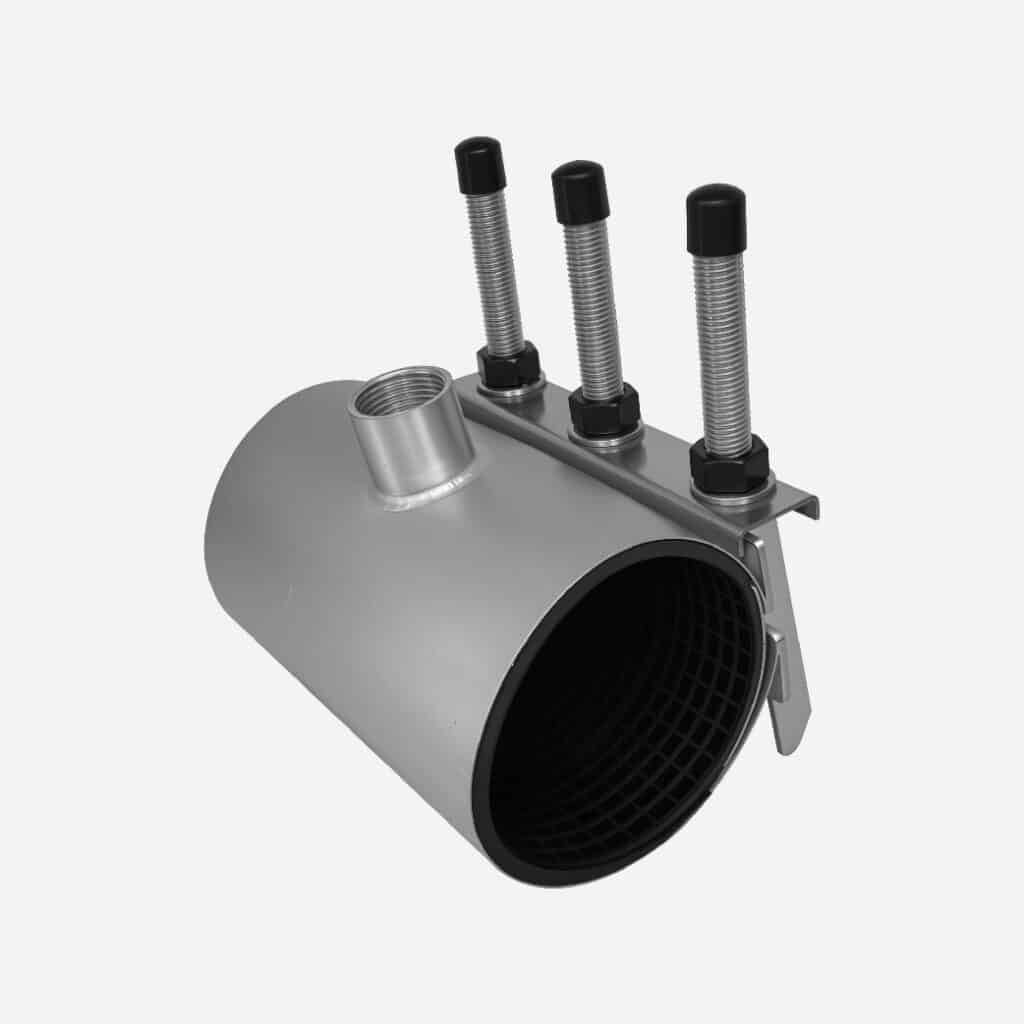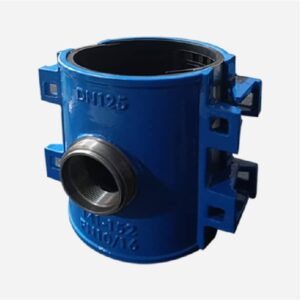TAPPING SLEEVE manufacturer
A tapping sleeve is a device used in the plumbing and waterworks industry to create a connection to an existing pipeline without interrupting the service. It is essentially a type of fitting that wraps around a section of pipe and allows for a branch connection.
Judberd is tapping sleeve manufacturer from china, we have many different tapping sleeve for your choice as below, we have tapping sleeve with thread outlet and flange outlet
Tapping Sleeve With Thread Outlet, Material Stainless Steel, Mechanical Joint Type

Tapping Sleeve With Flange Outlet, Material Stainless Steel, Mechanical Joint Type
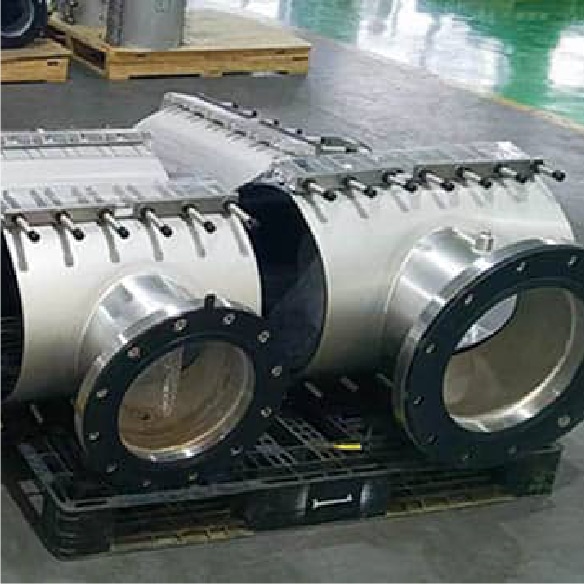
Tapping Sleeve With Flange
Outlet and gasket, Material Stainless Steel, Mechanical Joint Type

Tapping Sleeve With Flange Outlet, Material Stainless Steel, Mechanical Joint Type
VIDEO
TAPPING SLEEVE PARTS
The tapping sleeve is mainly composed of the following parts:
● BODY
The body part is usually made of cast iron, stainless steel or other corrosion-resistant materials to wrap and support the main pipeline.
● BRANCH OUTLET
The part of the interface used to connect the branch pipeline.
● GASKET
Located between the body and the main pipeline, used to ensure sealing and prevent leakage. Usually made of rubber or other elastic materials.
● BOLTS AND NUTS
Used to fix the body part to the main pipeline to ensure the tapping sleeve is firmly installed.
● TAPPING VALVE
Some tapping sleeves have a valve to control the flow of fluid.
● TAPPING TOOL
A device used to tap the main pipeline for easy flow of fluid through the outlet.
-1024x850.jpg)
These parts work together to ensure safe and effective connection and maintenance of
pipeline branches without shutting down the main pipeline.
Tapping Sleeve Working Principle
The working principle of the tapping sleeve is as follows
1, PREPARATION
_
First, install the body part of the tapping sleeve on the main pipeline to ensure it is in the correct position. The body part of the tapping sleeve is usually made up of two halves and is secured to the main pipeline with bolts and nuts.
2, SEALING
_
During the installation process, the gasket (usually made of rubber or other elastic materials) is clamped between the tapping sleeve and the main pipeline. Tightening the bolts and nuts will put pressure on the gasket to form a tight seal, preventing leaks.
3, TAPPING
_
After installation, a hole is drilled in the main pipeline using the tapping tool on the tapping sleeve. This step usually requires a special tapping tool that can drill a hole while the fluid is still flowing.
4, CONNECTING THE BRANCH PIPELINE
_
Once the hole is drilled, the branch pipeline can be connected to the main pipeline through the outlet on the tapping sleeve. Once the branch pipeline is connected, fluid can be transported.
5, CONTROLLING FLUID FLOW
_
If the tapping sleeve has a valve, fluid flow can be controlled by the valve. To open the branch pipeline, the valve is opened; to close the branch pipeline, the valve is closed.
The tapping sleeve drills a hole in the main pipeline while the fluid is still flowing, seals it with a gasket to prevent leaks, and connects the pipeline branches.
This method is particularly useful for pipeline modifications or extensions that require no water or air shutdown.
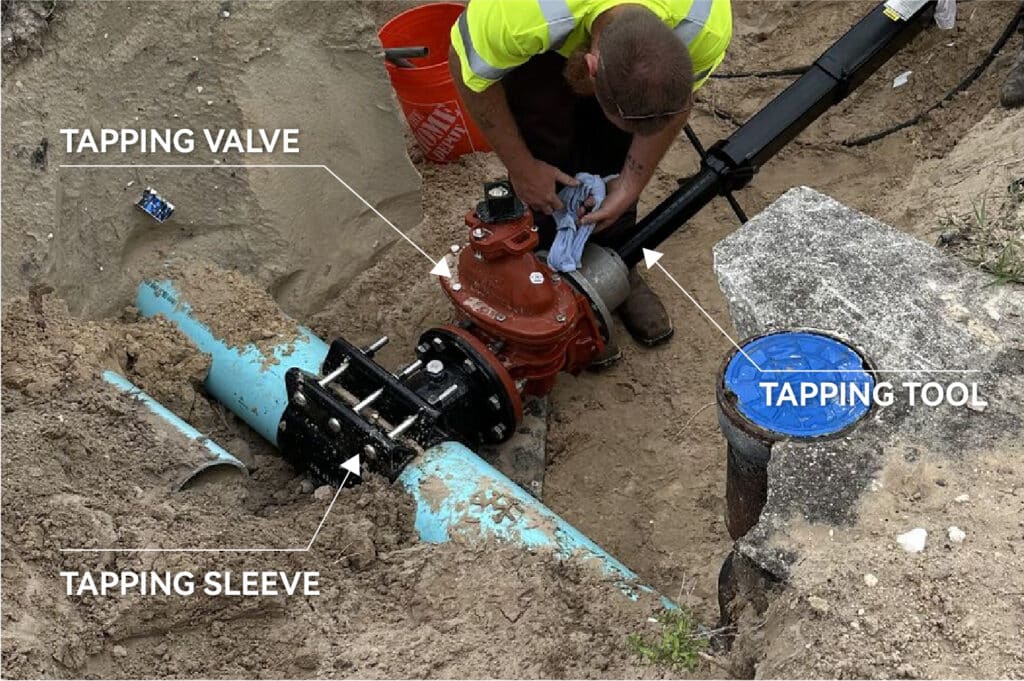
TAPPING SLEEVE USE
● EXPAND PIPELINE NETWORK
Drill holes in the existing pipeline system, connect new branch pipelines, expand the pipeline network, and do not need to shut down the main pipeline. Suitable for various fluid transport systems.
● MAINTENANCE AND REPAIR
Maintenance and repair can be carried out quickly and conveniently without affecting the operation of the main pipeline.
● PIPELINE DIVERSION
After drilling the main pipeline, connect the branch pipeline to achieve fluid diversion and increase the flexibility of the system.
● EMERGENCY REPAIR
When the pipeline fails, it is possible to quickly add branch pipelines for emergency repair, reducing downtime.

TAPPING SLEEVE TYPES
According to function, tapping sleeve can be divided into the following types:
STANDARD TAPPING SLEEVE
_
● FUNCTION
Used for general pipe branch connection.
● FEATURES
Simple design, suitable for most water and gas pipeline systems.
HIGH-PRESSURE TAPPING SLEEVE
_
● FUNCTION
Used for patching leaks or cracks in a local area, usually for smaller repair needs.
● FEATURES
Cover part of the pipe, easy and quick to install.
ANTI-CORROSION TAPPING SLEEVE
_
● FUNCTION
Used to repair leaks at pipe joints, especially for repairing bell joints.
● FEATURES
Specially designed to fit the shape of the pipe joint, providing effective sealing.
SEISMIC TAPPING SLEEVE
_
● FUNCTION
Used to connect branch pipes after piercing the pipe or repair local damage to the pipe.
● FEATURES
Shaped like a saddle, wrapping above the pipe and secured with bolts.
TAPPING SLEEVE WITH VALVE
_
● FUNCTION
Used for general pipe branch connection.
● FEATURES
Simple design, suitable for most water and gas pipeline systems.
QUICK INSTALLATION TAPPING SLEEVE
_
● FUNCTION
Used for patching leaks or cracks in a local area, usually for smaller repair needs.
● FEATURES
Cover part of the pipe, easy and quick to install.
LARGE DIAMETER TAPPING SLEEVE, GENERALLY FLANGE OUTLET CONNECTION
_
● FUNCTION
Used to repair leaks at pipe joints, especially for repairing bell joints.
● FEATURES
Specially designed to fit the shape of the pipe joint, providing effective sealing.
SMALL DIAMETER TAPPING SLEEVE,
GENERALLY THREADED OUTLET CONNECTION
_
● FUNCTION
Used to connect branch pipes after piercing the pipe or repair local damage to the pipe.
● FEATURES
Shaped like a saddle, wrapping above the pipe and secured with bolts.
These different types of tapping sleeves, according to their specific functional characteristics,
are suitable for different use scenarios and requirements, ensuring safe and reliable connection and branching in a variety of pipeline systems.
TAPPING SLEEVE MATERIAL
The different components of the tapping sleeve are made of different materials to meet their specific functional requirements.
Here are the common components and their materials:
BODY MATERIALS
_
● Cast Iron
● Stainless Steel
● Carbon Steel
● Composite Materials
OUTLET MATERIALS
_
● Cast Iron
● Stainless Steel
● Carbon Steel
● Copper Alloy
GASKET MATERIALS
_
● Rubber (such as EPDM, NBR, etc.)
● Polytetrafluoroethylene (PTFE)
● Silicone
BOLTS AND NUTS MATERIALS
_
● Stainless Steel
● Carbon Steel (usually galvanized)
● Alloy Steel
VALVE (IF INTEGRATED IN THE TAPPING SLEEVE) MATERIALS
_
● Cast Iron
● Stainless Steel
● Brass
● Copper Alloy
TAPPING TOOL MATERIALS
_
● Carbon Steel
● Stainless Steel
Different components are made of different materials to ensure strength and durability while achieving good corrosion resistance and sealing.
Choosing the right materials based on specific operating environments and requirements can improve the performance and service life of the tapping sleeve.
REPAIR CLAMP STANDARD
The design of Pipe Repair Clamps needs to comply with a series of standards and specifications to ensure their safety, reliability,
and effectiveness in different pipe systems. Here are some common design standards and specifications:
INTERNATIONAL STANDARDS
● ISO 7005
Standard for pipe flanges specifying the dimensions and tolerances for flange connections.
● ISO 2531
Standard for ductile iron pipes, fittings, accessories, and joints for water and waste water systems.
AMERICAN STANDARDS
● AWWA C223
Standard for pipe fittings published by the American Water Works Association (AWWA), specifically for the specification of tapping sleeves.
● AWWA C110
Standard for ductile iron and cast iron fittings for water and other liquid transportation.
● ANSI/ASME B16.1
Standard for cast iron flanges and flange fittings for industrial and municipal pipeline systems
● ANSI/ASME B31.1
Standard for pressure piping, covering the design, fabrication, and testing of power piping.
● ASTM A536
Standard for materials for ductile iron specifying the mechanical properties of different grades of ductile iron.
EUROPEAN STANDARDS
● EN 545
Standard for ductile iron pipes, fittings, accessories, and joints for water supply systems.
● EN 1092
Standard for joints and repair clamps, applicable to water supply and wastewater pipe systems.
OTHER RELEVANT STANDARDS
● MSS SP-60
Standard for tapping sleeves published by the Manufacturers Standardization Society (MSS) covering design, material, and testing requirements.
● API 1104
Standard for pipeline welding published by the American Petroleum Institute (API) for oil and gas transportation pipelines.
These standards ensure the quality and performance of tapping sleeves in various applications.
When manufacturing and purchasing tapping sleeves,
reference should be made to the relevant standards to ensure that the product meets the requirements for a specific application.
RFQ
What is a tapping sleeve used for?
A tapping sleeve is a specialized pipe fitting used to create a branch connection on an existing pressurized pipeline.
It allows for the addition of a new service line or branch without interrupting the flow in the main pipeline.
Here are some specific uses and applications of a tapping sleeve
ADDING BRANCH CONNECTIONS
_
● MUNICIPAL WATER SYSTEMS
Used to connect new service lines to existing water mains without shutting down the system.service lines to existing water mains without shut
● INDUSTRIAL PIPELINES
Facilitates the addition of new branches in industrial fluid and gas transport systems.
PIPELINE MAINTENANCE AND REPAIR
_
● LEAK REPAIR
Used to bypass a section of the pipeline that needs repair.
● PIPELINE EXTENSIONS
Allows for extensions and modifications to existing pipelines without service disruption.
METER AND VALVE INSTALLATION
_
● WATER METERS
Enables the installation of water meters on live water mains.
● CONTROL VALVES
Allows for the insertion of control valves into existing pipelines to manage flow and pressure.
EMERGENCY SITUATIONS
_
● QUICK ACCESS
Provides rapid access to pipelines in emergency situations, such as leaks or breaks, allowing for immediate intervention.
DIVERSION AND DISTRIBUTION
_
● FLOW DIVERSION
Used to divert the flow of water or other fluids to different areas within a distribution network.
● HYDRANT INSTALLATION
Facilitates the installation of fire hydrants in municipal water systems.
UTILITY UPGRADES
_
● CAPACITY EXPANSION
Helps upgrade and expand utility networks by adding new lines and increasing capacity without major disruptions.
● INFRASTRUCTURE DEVELOPMENT
Supports infrastructure development by integrating new pipelines into existing systems.
Tapping sleeve is an essential tool in pipeline systems for adding branches, performing maintenance,
installing meters and valves, handling emergencies, diverting flow, and upgrading utility networks.
Its ability to work on live pipelines makes it invaluable for ensuring continuous operation and minimizing service interruptions.
WHAT IS THE DIFFERENCE BETWEEN A SADDLE AND A TAPPING SLEEVE?
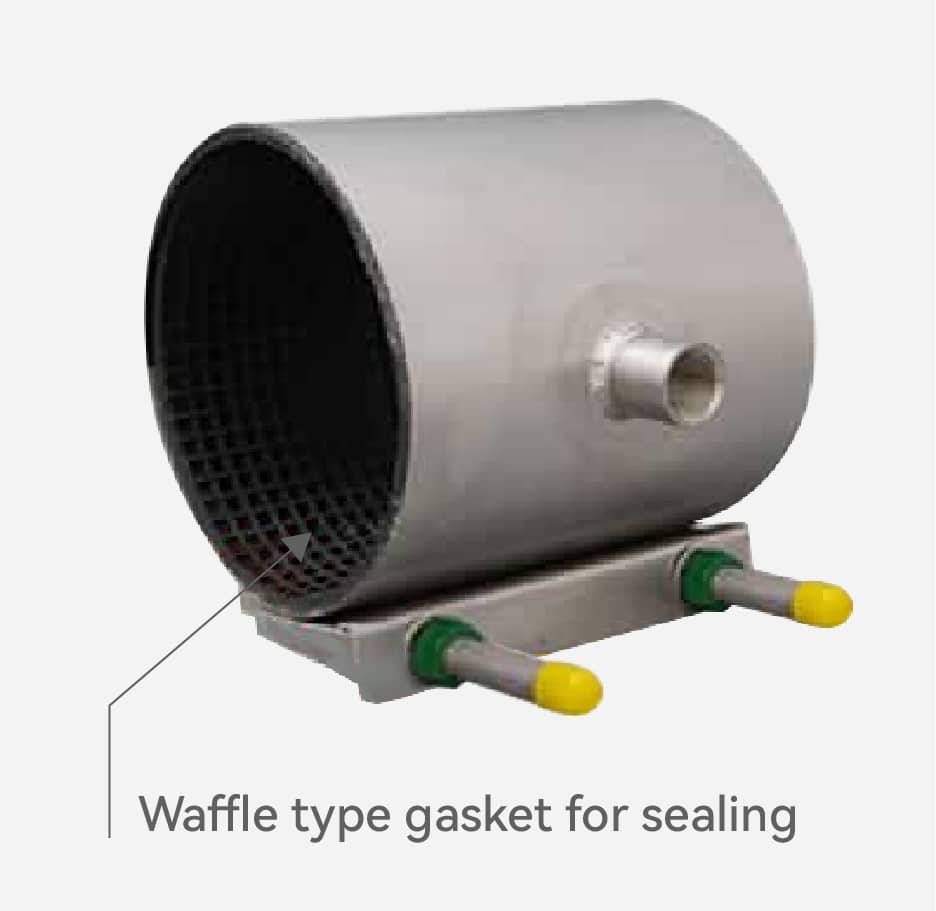
The tapping sleeve has the function of split water from the main pipes, while the sleeve part of the tapping sleeve has the function of repair to avoid leaking.
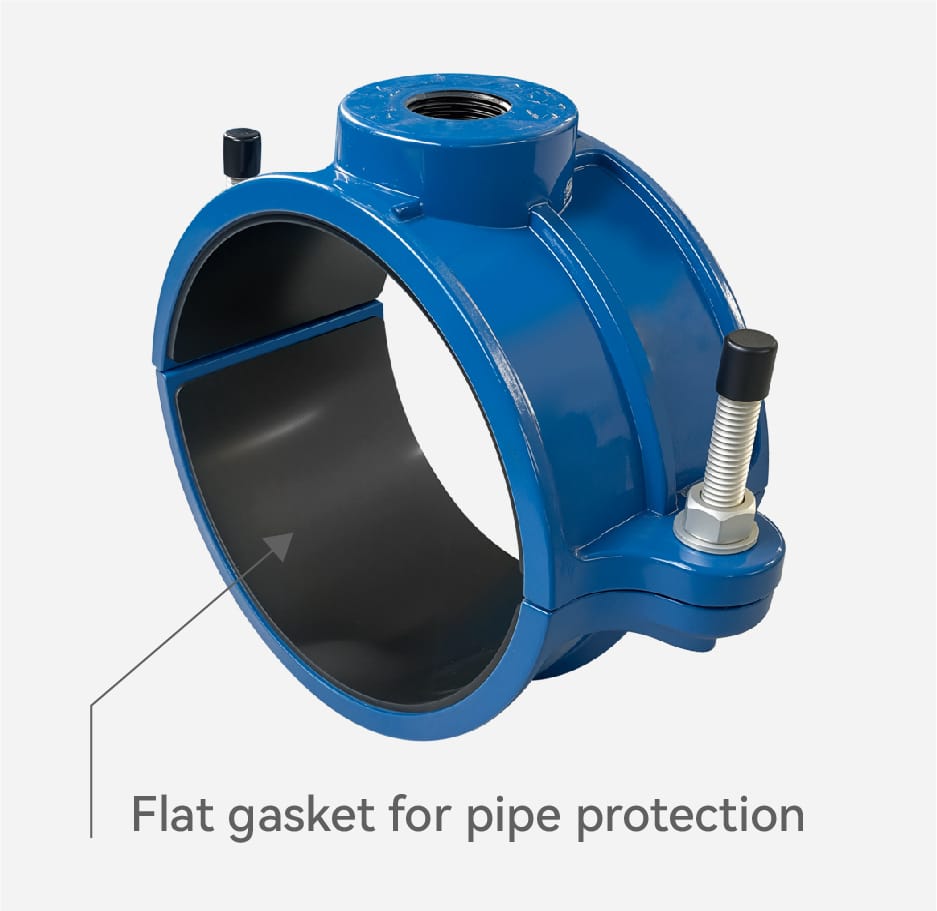
The tapping saddle only divides water from the main pipe to the branch pipe, it does not repair the pipe. the rubber gasket on the sleeve part is only to protect the pipe from damage and not to seal the water
Tapping Sleeves add repair to the main pipe and have a longer seal to the main pipe, suitable for larger diameter and higher pressure pipe systems, providing a more reliable seal and a stronger structure, typically used for critical and permanent connections.
Tapping Saddles are used mainly for splitting compared to a tapping sleeve, the seal is only around the branch outlet in the main pipeline , suitable for smaller diameter and lower pressure pipe systems, and are easy and quick to install.
WHAT IS THE DIFFERENCE BETWEEN A TAPPING VALVE AND A GATE VALVE?
All valves that have the function of cutting off fluid and whose inner diameter can meet the requirements of drilling can be used as tapping valves.
Tapping valves can be gate valves, knife gate valves or butterfly valves, etc.
If gate valves are used as tapping valves,
branch pipes can only follow the principle of use of the gate valve is that it can only be fully opened or fully closed, can’t be partly opened or partly closed.

